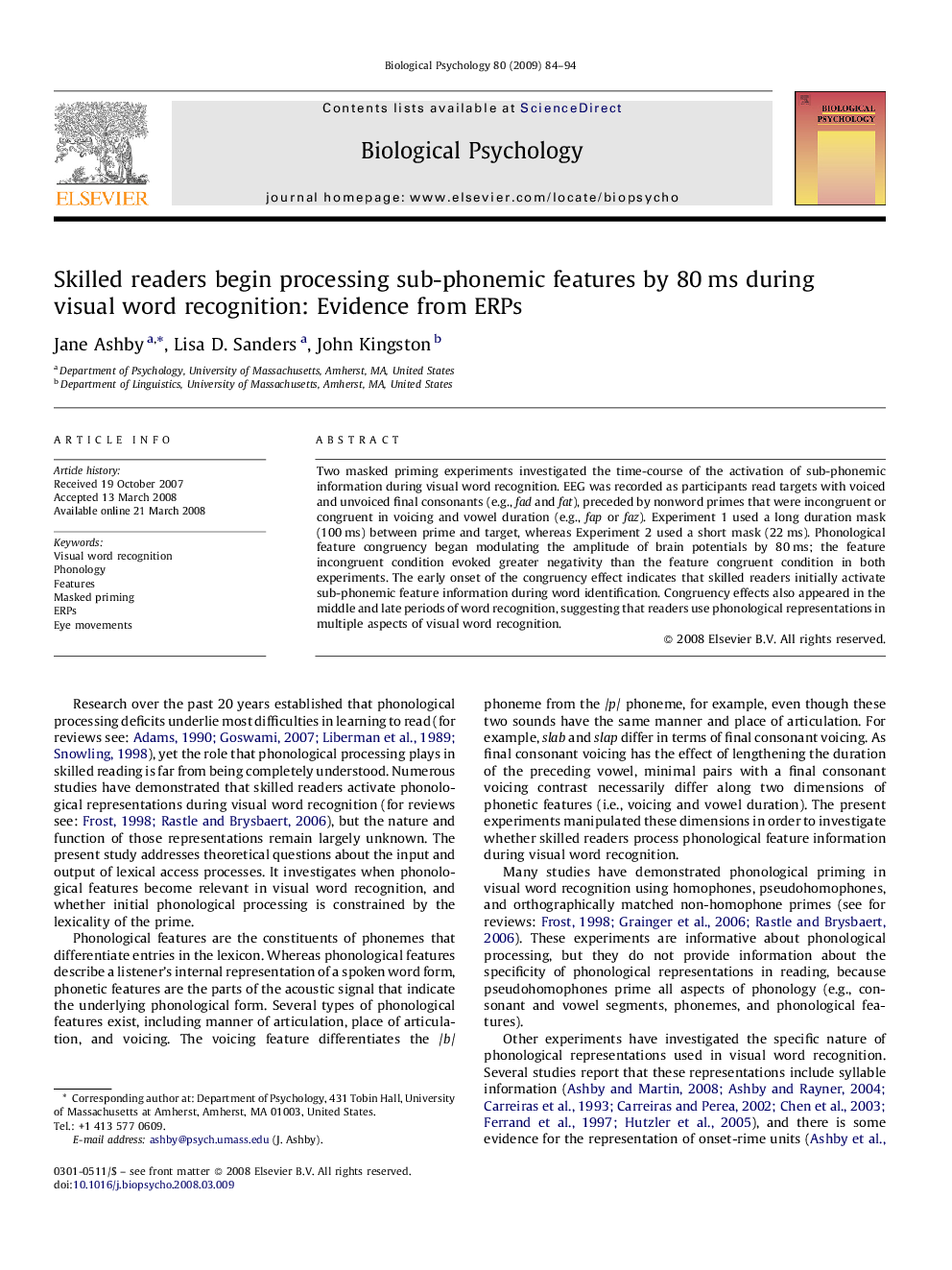| Article ID | Journal | Published Year | Pages | File Type |
|---|---|---|---|---|
| 921529 | Biological Psychology | 2009 | 11 Pages |
Two masked priming experiments investigated the time-course of the activation of sub-phonemic information during visual word recognition. EEG was recorded as participants read targets with voiced and unvoiced final consonants (e.g., fad and fat), preceded by nonword primes that were incongruent or congruent in voicing and vowel duration (e.g., fap or faz). Experiment 1 used a long duration mask (100 ms) between prime and target, whereas Experiment 2 used a short mask (22 ms). Phonological feature congruency began modulating the amplitude of brain potentials by 80 ms; the feature incongruent condition evoked greater negativity than the feature congruent condition in both experiments. The early onset of the congruency effect indicates that skilled readers initially activate sub-phonemic feature information during word identification. Congruency effects also appeared in the middle and late periods of word recognition, suggesting that readers use phonological representations in multiple aspects of visual word recognition.
